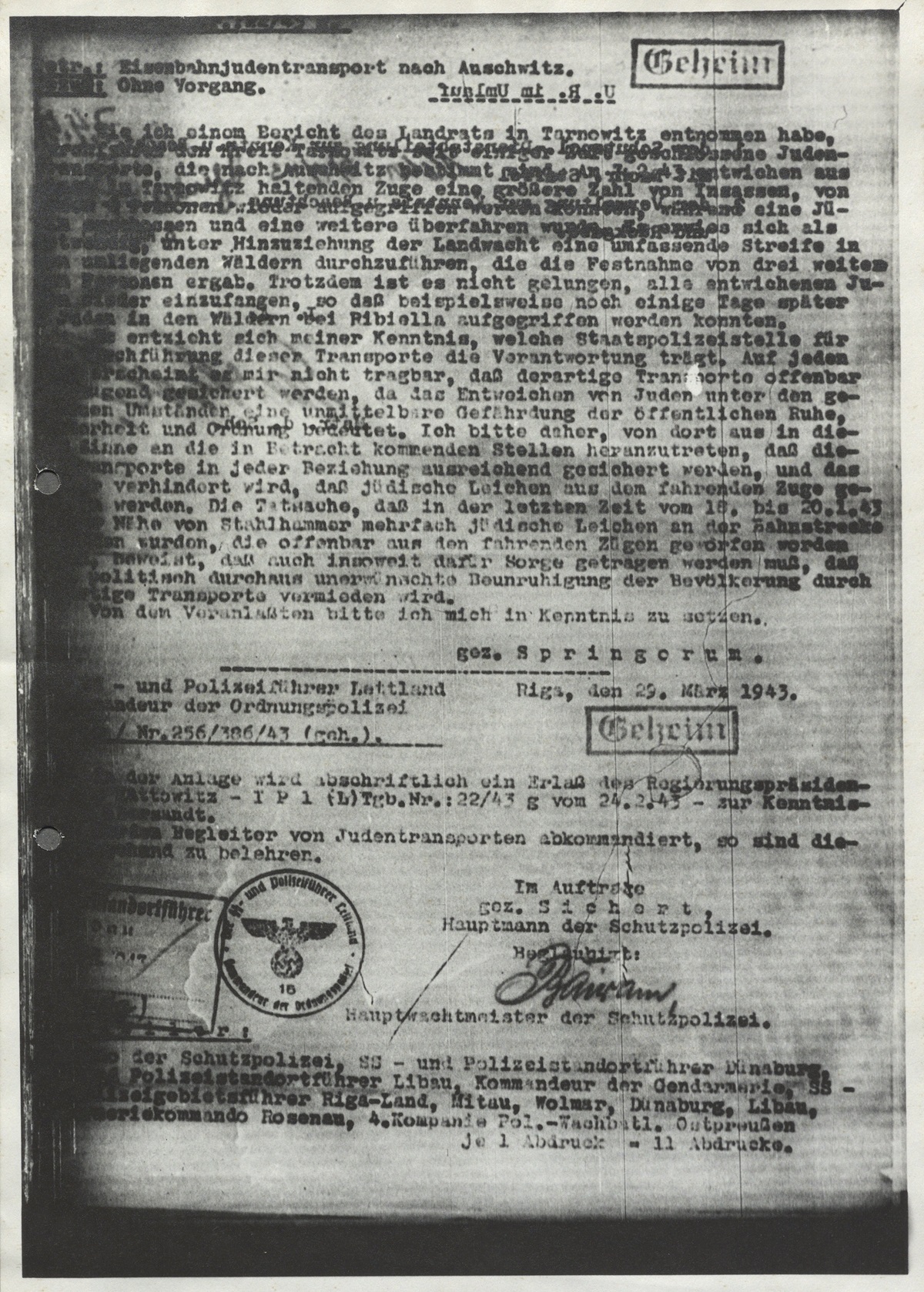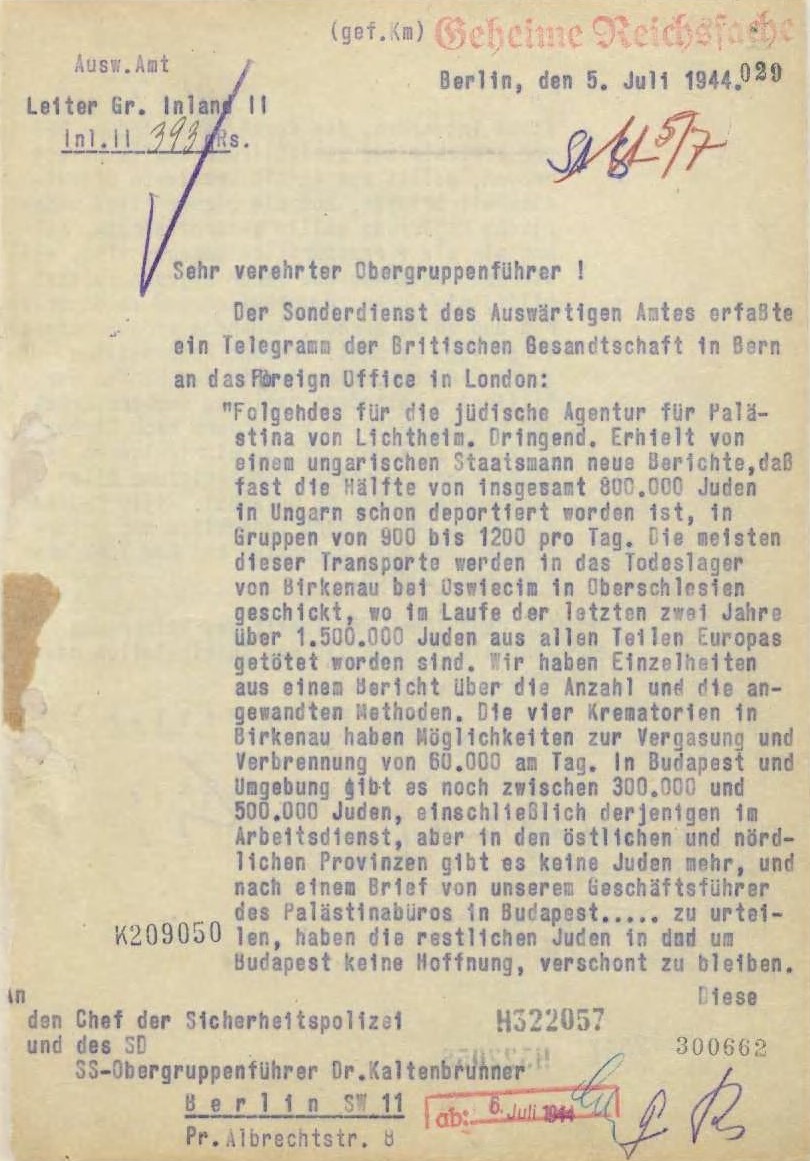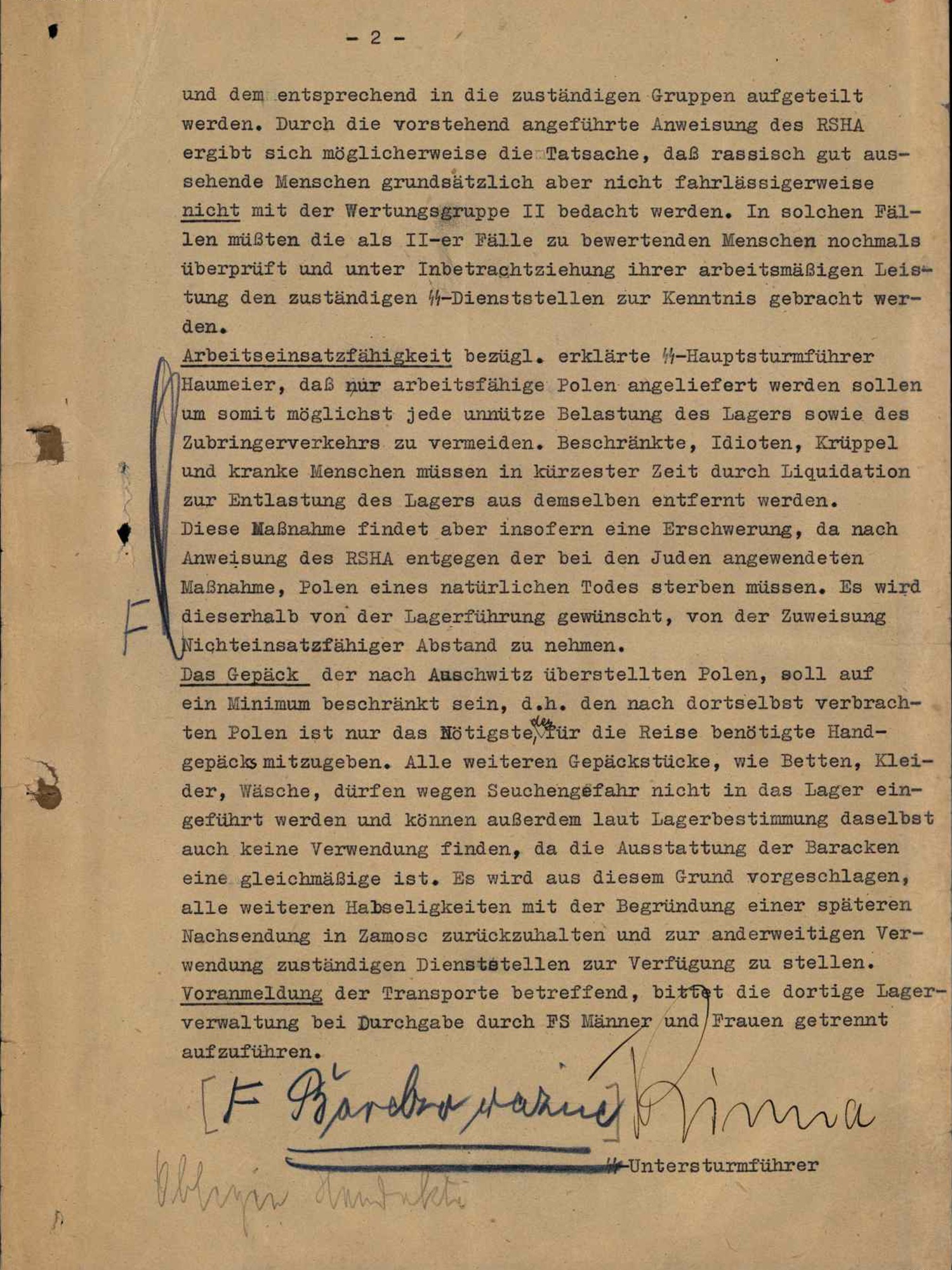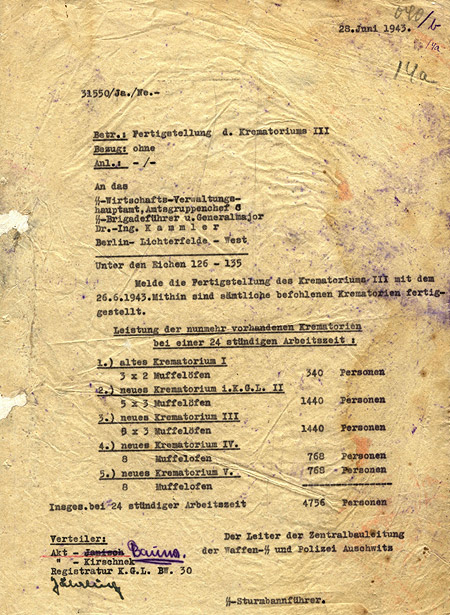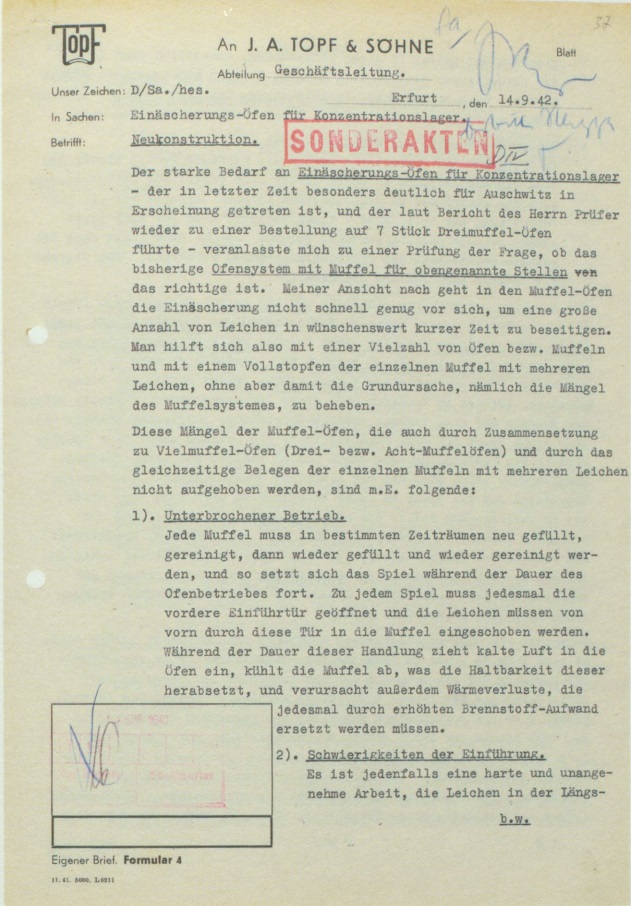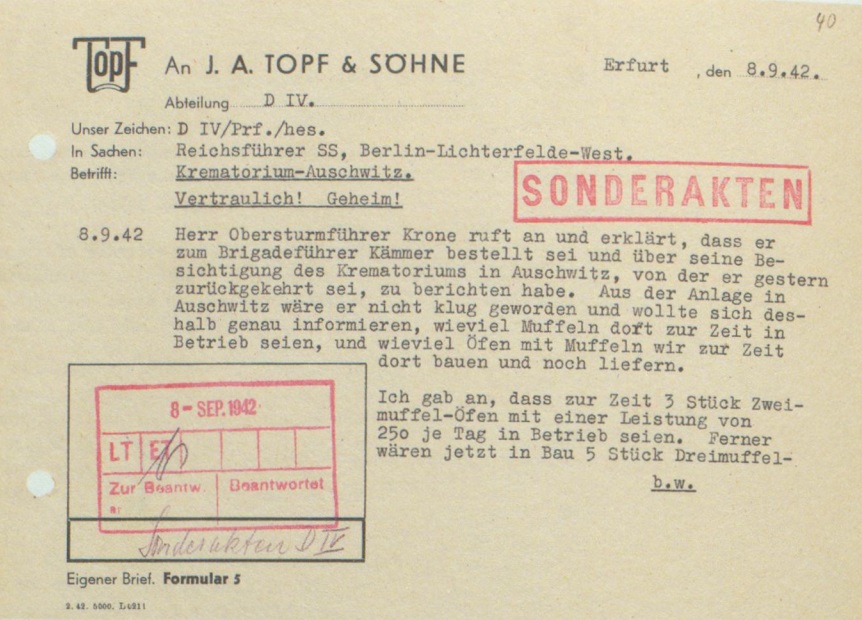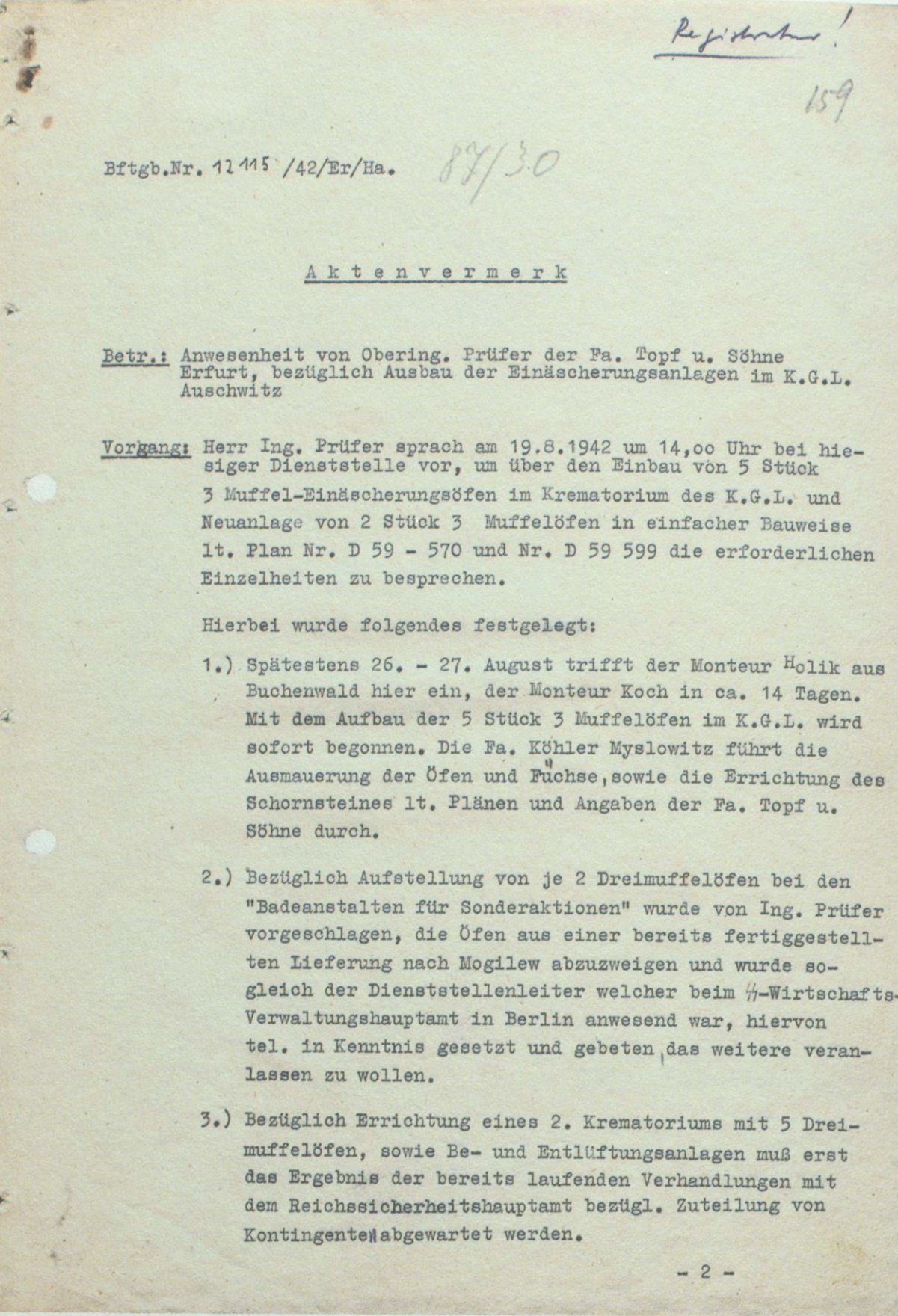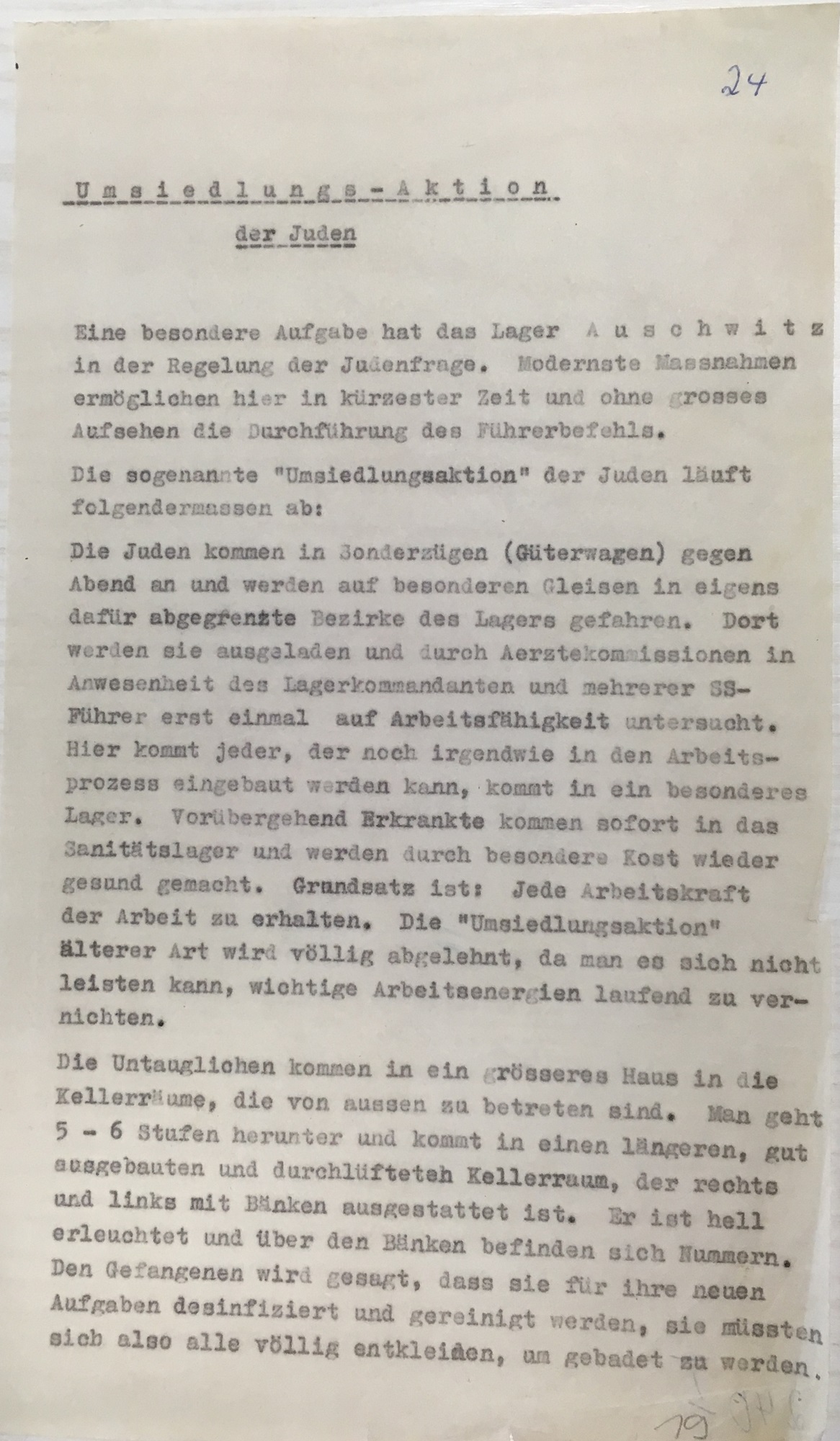Your Attractive Heading A decree dated February 24, 1943 issued by Walter Springorum, President of the Government District of Kattowitz, reports a incident on February 7, 1943, in which a large number of Jewish prisoners escaped from a halted deportation train bound for Auschwitz in Tarnowitz. According to the decree, four escapees were recaptured, while one Jewish woman was shot and another was run over. Springorum also noted that between January 18 and 20, 1943, "several Jewish corpses were found along the railway", apparently thrown from moving trains. He was concerned about "politically undesirable unrest among the population" that may be caused by such deportation transports.
Your Attractive Heading On July 5, 1944, Horst Wagner, head of Jewish affairs at the German Foreign Office, sent critical information in a letter to SS-Obergruppenführer Ernst Kaltenbrunner, chief of the Security Police and SD. Wagner shared an intercepted radio message between the British Embassy in Bern and the Foreign Office in London. According to the intercepted communication, a Hungarian official had reported that "nearly half of the total 800,000 Jews in Hungary have already been deported" and were "being sent to the death camp at Birkenau near Oswiecim in Upper Silesia." The message urged immediate military action – "bombing of the railway lines from Hungary to Birkenau" and "strikes on the facilities of the death camps" to disrupt the extermination operations.
Your Attractive Heading In late 1942, several thousand Poles were deported from Zamosc, Poland, following Nazi racial classifications that determined their fate. This process was part of Himmler’s directive on November 12, 1942, to make Zamosc the "first German settlement area in the Generalgouvernement". Those deemed racially "inferior" were sent to Auschwitz, with a transport of 644 individuals departing Zamosc on December 10, 1942. On December 16, SS-Untersturmführer Heinrich Kinna from the migration central offic, wrote a report on the transport. He summarized his conversation with Auschwitz deputy commandant Hans Aumeier, who disclosed that "Imbeciles, idiots, cripples, and sick people must be removed from the camp promptly through liquidation to unburden the camp. This measure, however, encounters complications, as per RSHA orders, Poles, unlike Jews, must die a natural death."
Your Attractive Heading Memo on a telephone call on 17 February 1943 between Topf engineers Karl Schultze and Fritz Sander, in which Sander noted that the "ventilation blower No. 450 for the gas cellar" (Gaskeller) of the crematorium 2 in Auschwitz- Birkenau could not be located. Schultze requested that the blower should be produced on an expedited basis and dispatched, as it "is urgently required" in Auschwitz.
Your Attractive Heading According to a radio message from September 15, 1942 and a trip report dated September 17, 1942, on 16 September 1942, a delegation from Auschwitz — consisting of Commandant SS-Obersturmbannführer Rudolf Höß, SS-Untersturmführer Franz Hößler, who was responsible for clearing mass graves, and SS-Untersturmführer Walther Dejaco from the Central Construction Office — visited Litzmannstadt to inspect "the test station for field ovens as part of Aktion Reinhard", i.e. the open air cremation furnaces at the Kulmhof / Chełmno extermination camp The group examined the "special facility" and discussed its implementation at Auschwitz with SS-Standartenführer Paul Blobel. Blobel also ordered the delivery of "construction materials" and reserved a "ball mill for substances for Auschwitz concentration camp."
Your Attractive Heading On June 28, 1943, the Central Construction Office Auschwitz wrote a report addressed to the SS-WVHA on the completion of the third crematorium at Auschwitz-Birkenau. The document was written by SS-Untersturmführer Josef Janisch and prepared for the signature of SS-Sturmbannführer Karl Bischoff, head of the office. According to the report, Crematoria II and III each had the ability to cremate "1,440 persons" per day, while Crematoria IV and V could handle "768 persons" per day. Combined with the older crematorium at Auschwitz I, the camp’s total daily capacity reached "4,756 persons".
Your Attractive Heading Report by Topf & Söhne engineer Fritz Sander, dated September 14, 1942, on the new construction of incineration ovens for concentration camps. Sander points out the "high demand for cremation ovens" especially in Auschwitz", where "they resort to using a large number of ovens or muffles and overloading the individual muffles with multiple corpses". Furthermore, the practice that "multiple corpses must be packed into the muffle simultaneously…will likely cause damage to the relatively delicate muffle brickwork."
Your Attractive Heading Memo by Topf & Söhne engineer Kurt Prüfer regarding a phone call with the SS-Wirtschafts-Verwaltungshauptamt (SS Economic and Administrative Main Office) on September 8, 1942. Prüfer reports that the Auschwitz concentration camp is planning for cremation ovens with a total capacity to incinerate 2,650 corpses per day. However, he notes that "this number of muffles is still not sufficient; we are to deliver more ovens as quickly as possible."
Your Attractive Heading Report of SS-Untersturmführer Fritz Ertl, dated August 21, 1942 about a meeting with engineers Kurt Prüfer and Robert Köhler in Auschwitz from August 19 and 20, 1942. The report discusses the "installation of two 3-muffle ovens at the bathing installations for special actions", an euphemism for the Bunker extermination sites.
Your Attractive Heading The Franke-Gricksch Report was written by SS officer Alfred Franke-Gricksch following his visit to the Auschwitz concentration camp in May 1943. It describes in detail the processes involved in the mass extermination of Jews, including the use of gas chambers and crematoria.
